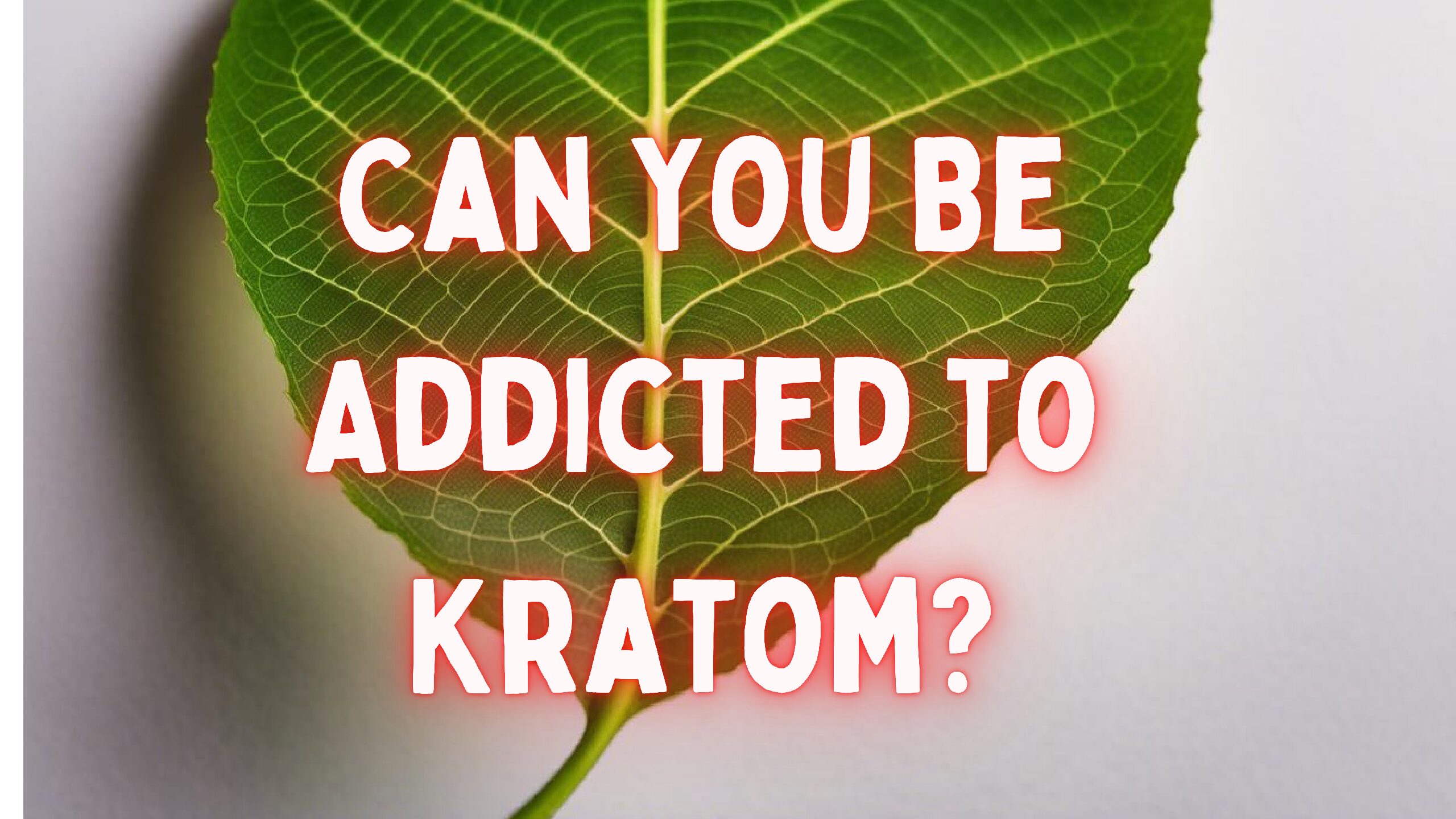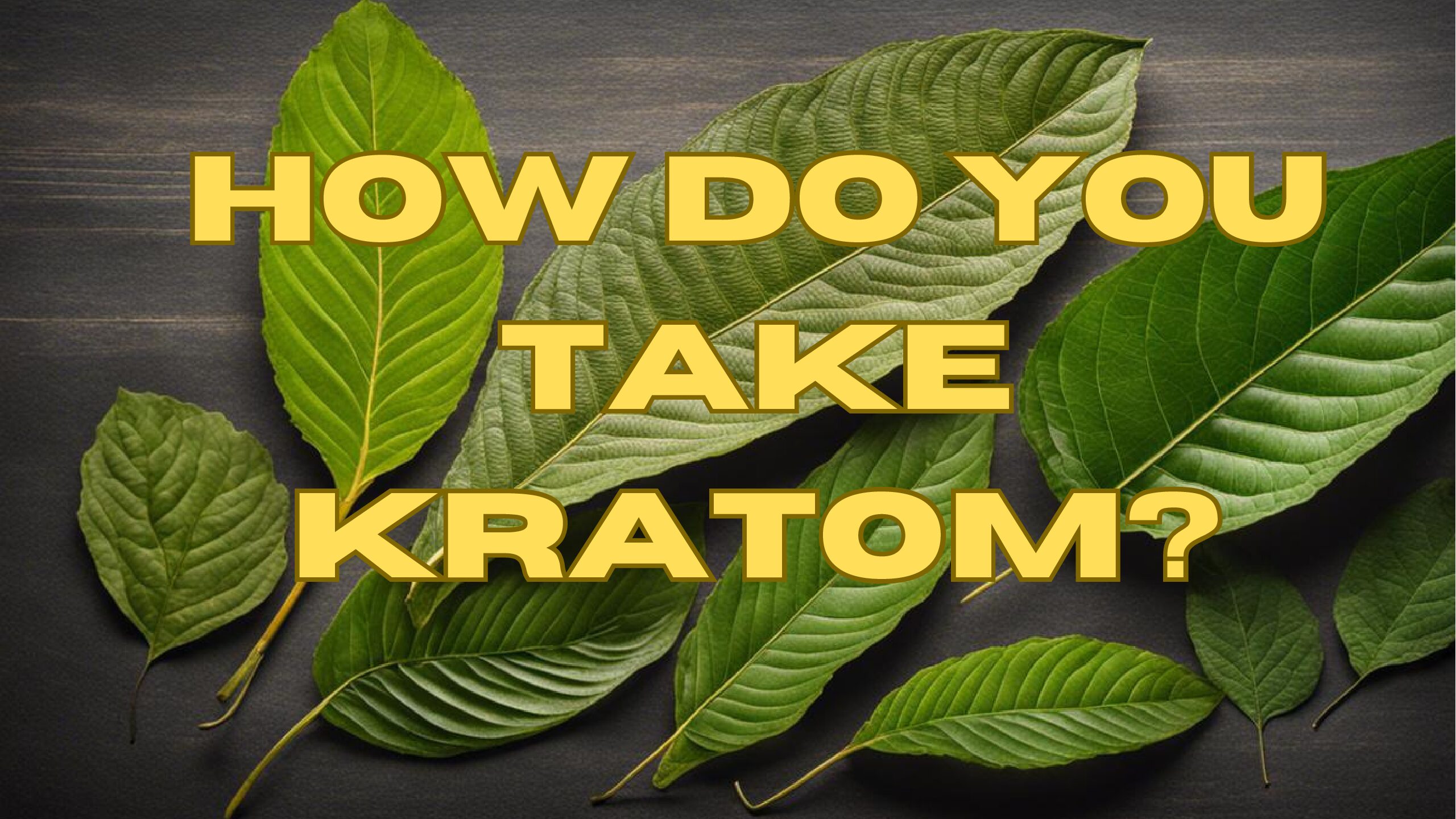CAN YOU BE ADDICTED TO KRATOM
Kratom, an intriguing plant with a rich history of beneficial purpose, has been a polarizing topic for many individuals as popularity grows in the United States. You see, despite its medicinal use and wide recreational reach, the debate surrounding Kratom’s addictive properties remains a contentious issue.
With the active compounds of Kratom interacting uniquely with the human body, the extent and nature of these effects warrant (bad word) meticulous scrutiny.
In a world grappling with getting control over substance addiction, the exploration of Kratom’s potential for addiction, in comparison to other substances (like opioids and alcohol), becomes pivotal.
Moreover, understanding the legal consequences that surround this substance globally paves the way for informed conversations about its future. First things first, what is Kratom?

What is Kratom
Kratom, scientifically known as Mitragyna speciosa, is a tropical tree that is native to Southeast Asia, specifically in countries such as Thailand, Malaysia, and Indonesia. The leaves of the kratom tree have been used traditionally for centuries in these Southeast Asian cultures for their stimulant and sedative properties, and in managing a variety of health conditions.
Both stimulant and narcotic effects of Kratom are traditionally noted in various cultures. In low doses, it was often chewed to combat fatigue and increase productivity among laborers.
Traditional Southeast Asian cultures also used kratom in ritualistic and social gatherings, while some cultures boiled the leaves into teas to help soothe minor physical discomforts. It also played a role in traditional medicine to manage symptoms related to diarrhea, muscle pain relief, and opium addiction.
Is Kratom Addictive
The primary active components of kratom are alkaloids, particularly mitragynine and 7-hydroxymitragynine. These chemicals act on the brain’s opioid receptors, producing sensations of pleasure, sedation, and decreased pain.
When consumed in smaller amounts, the mitragynine compound works as a stimulant, enhancing mood and increasing physical energy. In larger doses, the effects of kratom are similar to opioids, bringing about pain relief, euphoria, and sedation.
The alkaloids found in kratom act on the same brain receptors as morphine or heroin, which can potentially lead to dependence and later, addiction. Regular use of kratom, especially in high doses, can result in the body building a tolerance to its effects, prompting users to take more of the substance in order to achieve the same effect. Over time, this can lead to physical dependence and withdrawal symptoms when kratom use is stopped, which are classic signs of addiction.

Symptoms of kratom withdrawal may include muscle aches, insomnia, irritability, aggression, emotional changes, and cravings for the drug.
Therefore, while not everyone who uses kratom will develop an addiction, the risk still exists, especially in individuals who use the substance frequently or in high doses. It is also important to note that addiction to kratom may be susceptible to individual factors such as the user’s genetic makeup, mental health status, and environmental influences.
Kratom, despite possessing addictive qualities and potential for misuse, remains legal and unregulated in the United States. This absence of regulatory oversight raises concerns about the safety and purity of commercial kratom products. In contrast, several other nations such as Australia, Denmark, Poland, and Malaysia have classified kratom as a controlled substance due to the inherent risks associated with it.
You may also want to check out this other post… IS KRATOM LEGAL?
Kratom and Addiction Information
Getting to Know Kratom
In essence, Kratom is a tropical tree (Mitragyna speciosa) originating from Southeast Asia. Its leaves house compounds capable of invoking psychotropic, or mind-altering, impacts. It remains legal in the U.S. Currently, and is often employed as an alternative option to regulated substances, typically for mitigating chronic pain or easing withdrawal symptoms from opioids.
What Are the Different Strains of Kratom?
There are numerous strains of kratom, with each one providing a unique set of effects. Varieties can be classified into three main categories: red, white, and green.
- Red strains, such as Red Vein Bali and Red Vein Kali, are often used for their soothing and calming effects.
- White strains like White Vein Kali and White Vein Indo are drunk for their reported stimulatory effects and can help increase focus and energy.
- Green strains (for example, Green Malaysian) tend to sit midway between red and white strains, offering a balance of stimulation and relaxation.

Each individual’s response to kratom can vary greatly depending on their physique, tolerance, dosage, and the specific strain of kratom used.
Potential Risks and Addiction
While advocates (like myself) of kratom tout its therapeutic abilities, detractors point to risks that include potential for addiction and withdrawal. Similar to other substances that interact with the body’s opioid receptors, regular use of kratom can lead to physical dependence, making it difficult to stop taking it without experiencing withdrawal symptoms.
Symptoms may include muscle aches, irritability, hostile behavior, aggression, emotional changes, runny nose, and insomnia. Moreover, some serious cases have reported hallucinations, delusions, confusion, and even seizures.
Given these potential risks, anyone considering using kratom should consult with a healthcare professional and thoroughly discuss the potential benefits and risks associated with it. While it possesses certain potential therapeutic benefits, the potential for abuse and dependence remains a significant concern.
Addictive Properties of Kratom in Scientific Studies
There is some evidence suggesting that kratom can be addictive. One study conducted in Malaysia, where Kratom is widely used, found that regular and long-term consumption led to kratom dependence.
Furthermore, a study published in the “Journal of Psychopharmacology” in 2014 discovered that kratom withdrawal symptoms include hostility, aggression, inability to work, muscle and bone pain, among others.
On the other hand, a study conducted in 2017, investigating the risks posed by kratom misuse, revealed that out of on 8,049 people surveyed, only 1.9 percent showed signs of kratom dependence. Yet, the study concluded that more comprehensive research is needed to fully understand the potential for addiction.
What Are Symptoms of Kratom Addiction and Withdrawal
Physical symptoms of kratom addiction can be similar to those experienced with opioids. Nausea, itching, sweating, dry mouth, constipation, increased urination, and loss of appetite can be evident when an individual becomes dependent on kratom.
Some people may also experience insomnia, weight loss, and darkening of the skin tone of the face during periods of heavy use.
Withdrawal symptoms from kratom are also similar to those from opioid withdrawal and can include cravings, restlessness, muscle aches and pain, insomnia, aggression, anger, and sadness or nervousness. More severe cases may also experience hallucinations or delusions.
The general agreement among professionals is that kratom withdrawal symptoms are considerably less severe and shorter in duration than those associated with opioid withdrawal. However, it is still sufficient to cause distress and interfere with routine activities.

Kratom Versus Other Substances
Despite Kratom gaining recognition in Western societies where it is often promoted as a natural replacement for opioids, the addiction potential and subsequent withdrawal manifestations of Kratom, nonetheless, have been the subject of ongoing discussion.
Scientifically, Kratom possesses alkaloids that bind to the same opioid receptors in the brain as powerful narcotics like heroin and fentanyl. Despite this similarity, Kratom’s reported potencies are lesser than these potent opioids.
This difference in intensity is pivotal in determining the addiction potential of Kratom and suggests that its withdrawal symptoms could be milder than those of opioids.
IS KRATOM WORSE THAN OPIODS
Existing research into kratom’s addictive properties and potential for dependence is still developing. A study published in the Drug and Alcohol Dependence journal found that regular kratom users do experience withdrawal symptoms comparable to opioid withdrawal, including muscle aches, insomnia, irritability, and aggression but typically on a less extreme scale.
On the other hand, another study published in Psychology of Addictive Behaviors suggested that kratom has a lower risk of harmful effects and lesser withdrawal symptoms than that of opioids.
The effects of kratom were found to be less intense than opioids. While the researchers emphasized that the drug still has the potential for harm and should be used with caution, they suggested that its addictive potential is lower than that of opioids.
IS KRATOM WORSE THAN ALCOHOL
In terms of comparison with alcohol, both substances can be habit-forming, but alcohol has a broader and more severe range of potential health risks and withdrawal symptoms. Alcohol affects various systems in the body and can lead to health issues such as liver disease, heart problems, and neurological damage in cases of severe and chronic use. Withdrawal from alcohol can also produce severe symptoms, including hallucinations, seizures, and in extreme cases, death.
Meanwhile, kratom, in its pure form, seems to cause fewer severe physiological effects than alcohol. While kratom addicts might experience physical and psychological discomfort during withdrawal, current research suggests that using kratom does not carry the same risk level or severity of withdrawal symptoms associated with alcohol.
Understanding the Addict
In the matter of the addictive potential of kratom, it’s crucial to mention that research is still in progress and the full extent of long-term consequences remains somewhat elusive.
In spite of the occasional comparisons made with substances like opioids and alcohol, variance in addiction cannot be discounted, as an individual has the potential to become “addicted” to things other than substances, such as sex, exercise, or even chocolate.

Factors such as genetic predispositions, environmental influences, and prolonged usage can greatly affect the severity of any potential addiction or withdrawal symptoms that could arise.
Furthermore, misuse or overuse of kratom may lead to unfavorable health impacts, similar to opioids and alcohol. It is thus highly recommended that professional medical consultation should be sought when dealing with such substances.
Conclusion
The future legal prospects of kratom remain uncertain. As the debate surrounding its potential benefits and dangers continues, the evolving drug policy landscape may well determine the fate of the substance.
If further research reveals medically beneficial qualities that outweigh its potential for abuse, kratom may gain legal status and regulated distribution. The scheduling decision by the DEA could have life-altering implications for individuals who use kratom, either as a means to alleviate symptoms from a medical condition or for recreational use.
As the complex story of Kratom continues, we recognize the layers of context and consideration to the discussion of its potential for addiction. Quite a number of studies have been carried out to determine the addictive nature of kratom. The outcomes, however, have been varied and inconclusive.
As a result of these inconsistencies, many researchers are rallying for more extensive studies on the enigmatic plant and its overall impact on human health.
-The Educated Felon
It is essential to clarify that kratom’s legality varies greatly around the globe and even within the U.S., from state to state. So, before contemplating buying or using this herb, it’s crucial to be aware of the local laws and regulations.







